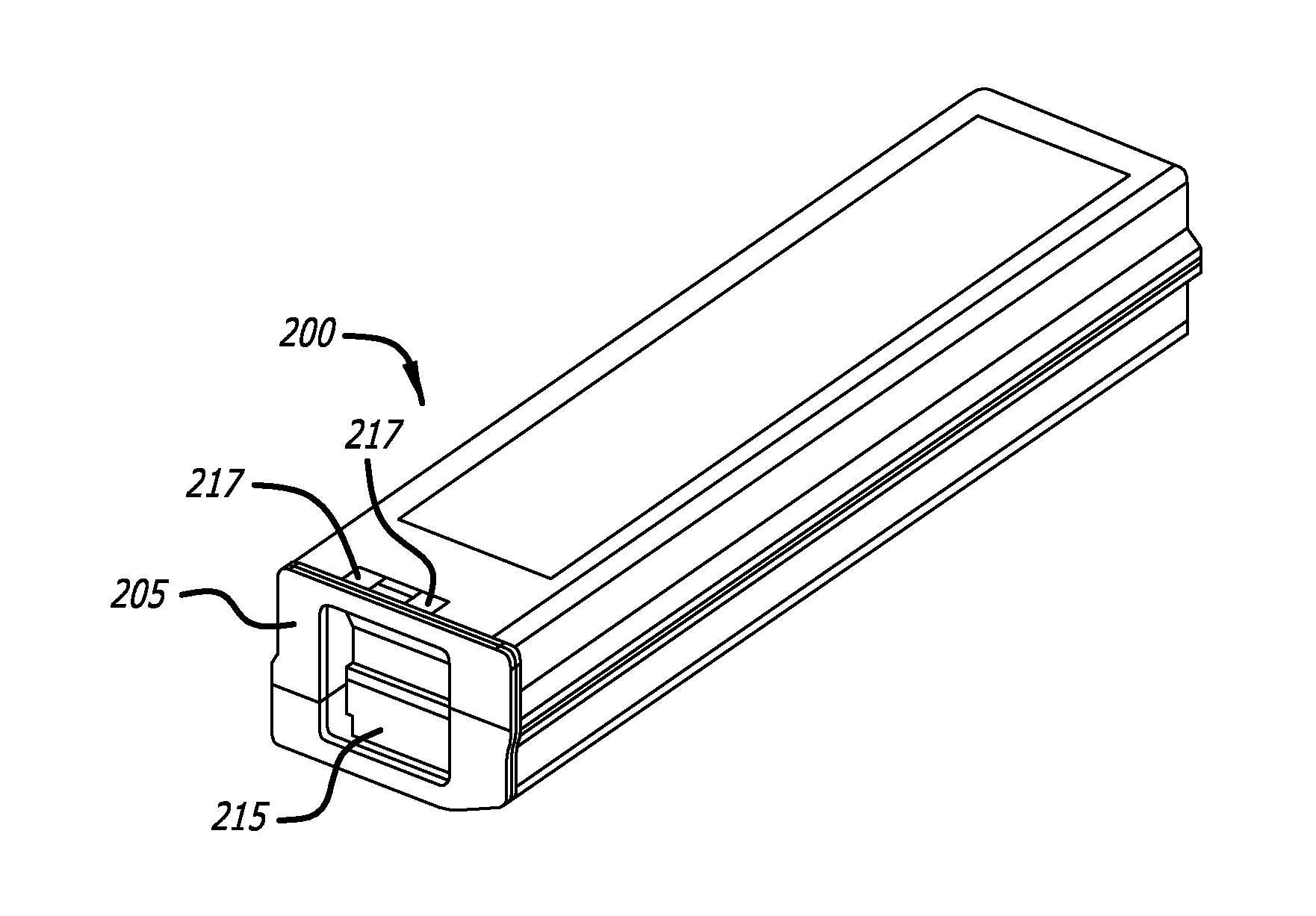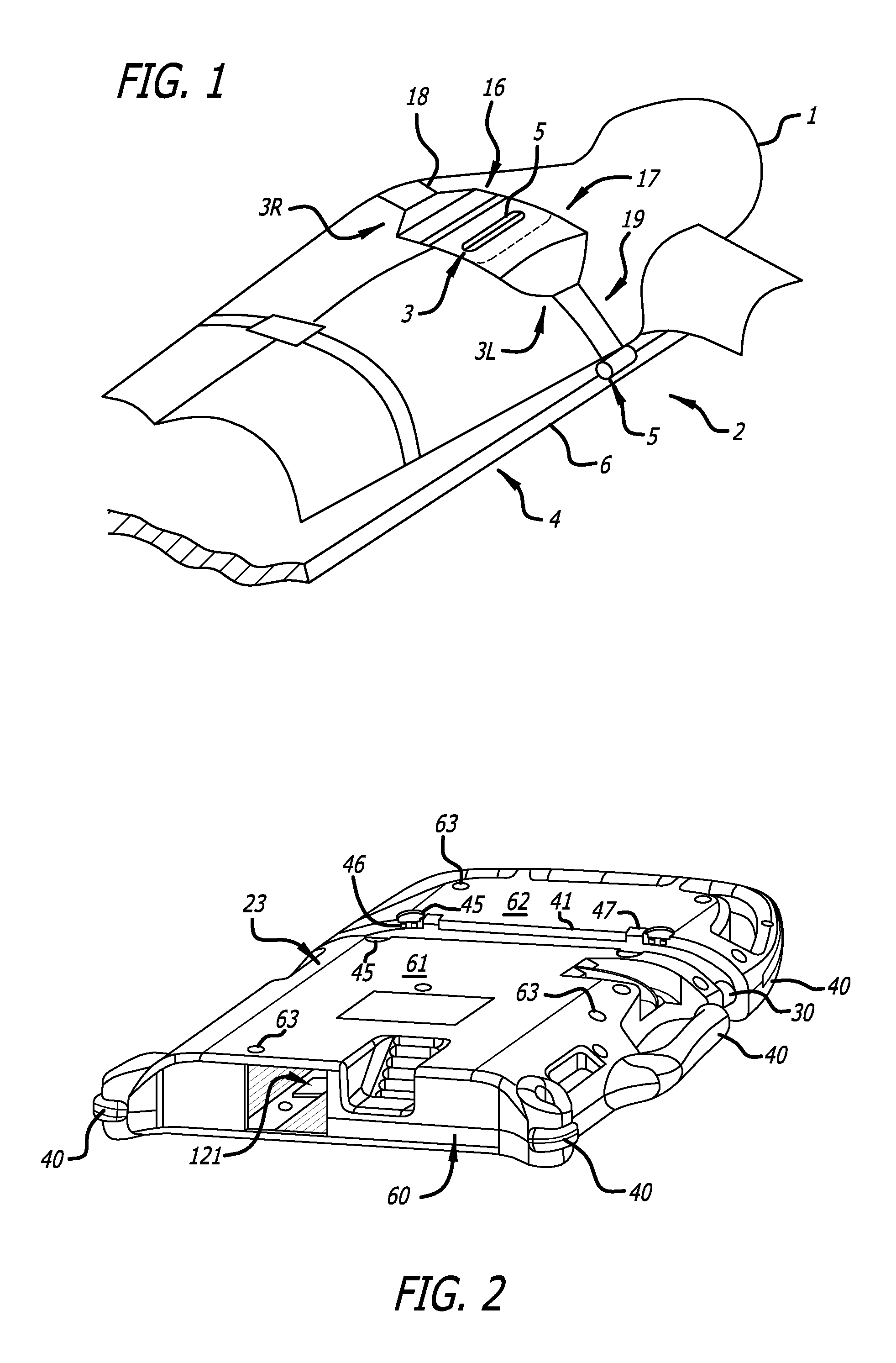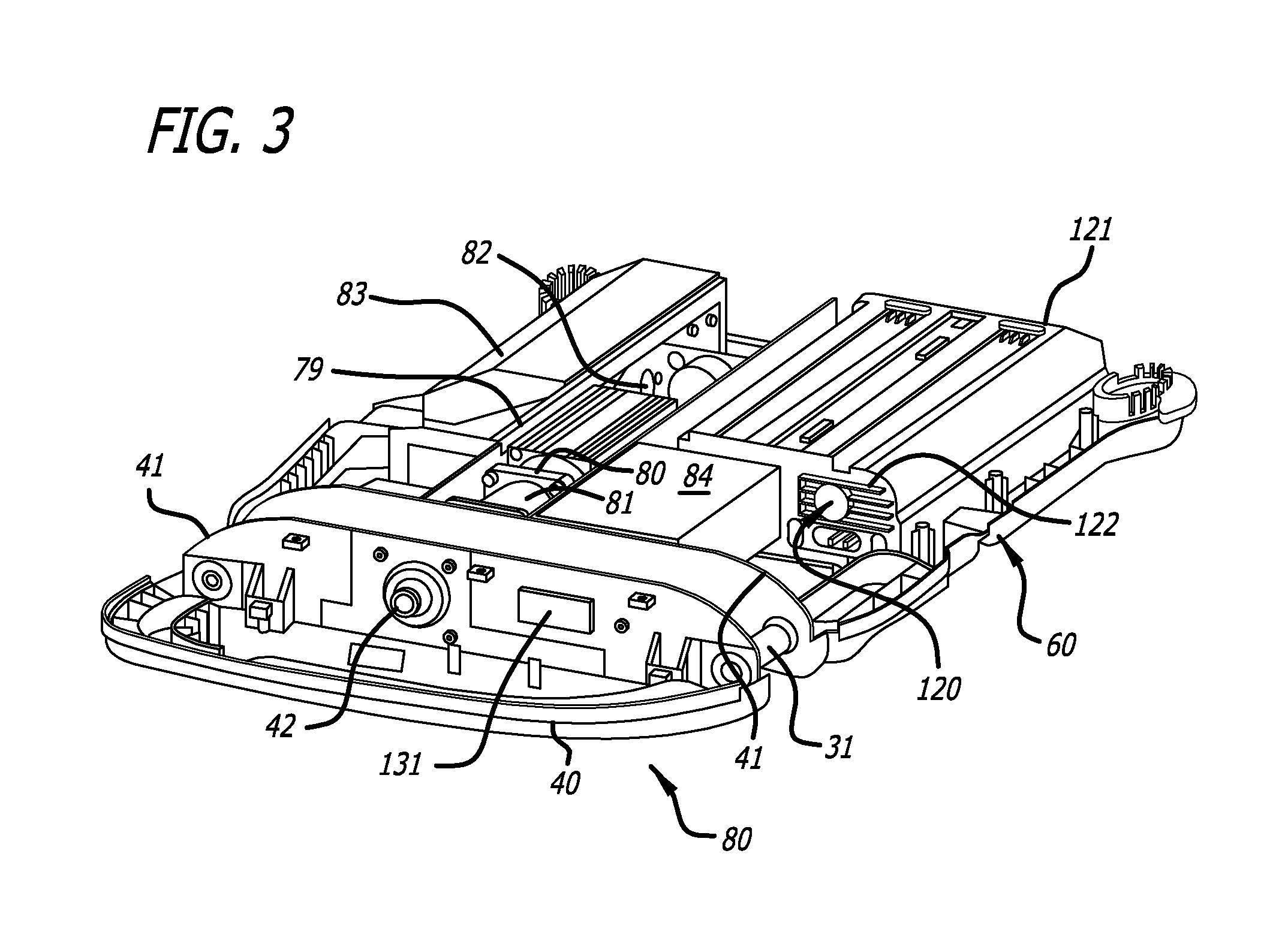Latch mechanism for battery retention
a latch mechanism and battery technology, applied in the field of latch mechanism for battery retention, can solve the problems of battery pack powering the device becoming disengaged from the device, experienced paramedics cannot maintain adequate chest compression for more than a few minutes, and the patient is not often successful in sustaining or reviving the patien
- Summary
- Abstract
- Description
- Claims
- Application Information
AI Technical Summary
Benefits of technology
Problems solved by technology
Method used
Image
Examples
Embodiment Construction
[0029]The various embodiments of the present invention are directed to providing a rechargeable battery for powering mobile equipment, particularly medical devices. The embodiments of the invention are particularly advantageous when the battery is required to provide a large amount of current over a predictable period of time. Moreover, the embodiments of the invention include a battery management system that controls all aspects of the operation of the battery, and also includes a memory in which events related to the battery that occur during the battery's lifetime are stored. Moreover, embodiments of the battery management system include the capability of accommodating batteries using different battery chemistries, and are also capable of being updated through a communication port.
[0030]While the various embodiments of the invention are described with reference to a mechanical compressions device, those skilled in the art will immediately appreciate that those embodiments are not...
PUM
| Property | Measurement | Unit |
|---|---|---|
| mean chest circumference | aaaaa | aaaaa |
| mean chest circumference | aaaaa | aaaaa |
| depth | aaaaa | aaaaa |
Abstract
Description
Claims
Application Information
 Login to View More
Login to View More - R&D
- Intellectual Property
- Life Sciences
- Materials
- Tech Scout
- Unparalleled Data Quality
- Higher Quality Content
- 60% Fewer Hallucinations
Browse by: Latest US Patents, China's latest patents, Technical Efficacy Thesaurus, Application Domain, Technology Topic, Popular Technical Reports.
© 2025 PatSnap. All rights reserved.Legal|Privacy policy|Modern Slavery Act Transparency Statement|Sitemap|About US| Contact US: help@patsnap.com



